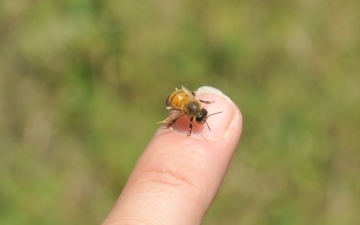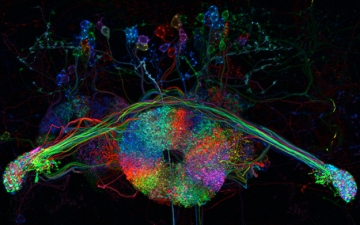Main Menu (Mobile)- Block
- Overview
-
Support Teams
- Overview
- Anatomy and Histology
- Cryo-Electron Microscopy
- Electron Microscopy
- Flow Cytometry
- Gene Targeting and Transgenics
- High Performance Computing
- Immortalized Cell Line Culture
- Integrative Imaging
- Invertebrate Shared Resource
- Janelia Experimental Technology
- Mass Spectrometry
- Media Prep
- Molecular Genomics
- Primary & iPS Cell Culture
- Project Pipeline Support
- Project Technical Resources
- Quantitative Genomics
- Scientific Computing
- Viral Tools
- Vivarium
- Open Science
- You + Janelia
- About Us
Main Menu - Block
- Overview
- Anatomy and Histology
- Cryo-Electron Microscopy
- Electron Microscopy
- Flow Cytometry
- Gene Targeting and Transgenics
- High Performance Computing
- Immortalized Cell Line Culture
- Integrative Imaging
- Invertebrate Shared Resource
- Janelia Experimental Technology
- Mass Spectrometry
- Media Prep
- Molecular Genomics
- Primary & iPS Cell Culture
- Project Pipeline Support
- Project Technical Resources
- Quantitative Genomics
- Scientific Computing
- Viral Tools
- Vivarium
The Janelia Archives
Artifact Name: Janelia Fluor® Dyes Science
Science
Fluorescent labels have been used by cell and molecular biologists for many years to study the location and activity of particular proteins and other molecules in a biological specimen. But fluorescent labels often bleach under the powerful light of a microscope, thus limiting the time a specimen can be examined.
Luke Lavis’s lab at Janelia has developed a family of fluorescent dyes that are significantly brighter and more photostable than fluorophores available to researchers in the past. These newer “Janelia Fluor” dyes have therefore enabled researchers to image specimens for extended periods of time, allowing for longer and more complex biology and biochemistry experiments. In particular, these dyes are bright enough to allow observation of the location and movement of individual molecules inside living cells. The Lavis lab has developed an entire palette of dyes in different colors as well as photoactivatable versions that allow the Nobel Prize–winning super-resolution localization microscopy technique developed by Janelians Eric Betzig and Harald Hess. The Janelia Fluor dyes have made this new microscopy much more available and useful to the research community.
Janelia’s interdisciplinary environment, where biologists interact closely with physicists, engineers, and chemists, made it possible to develop these Janelia Fluor dyes and their applications. Because of Janelia’s commitment to freely disseminate technologies developed in-house, the Lavis lab’s Janelia Fluor dyes have benefited hundreds of researchers worldwide, including many who come to visit Janelia to use microscopes housed within the Advanced Imaging Center.
Results from a 2-color particle tracking experiment in live mouse embryonic stem cells show the cellular location of histone H2B (upper left) and trajectories of the Sox2 transcription factor that are co-localized (magenta) or not co-localized (green) with histone H2B (lower left). Diffusion maps show that Sox2 trajectories co-localized with histone H2B move relatively slowly (upper right), while trajectories not co-localized with histone H2B move relatively fast (lower right).
Two cells, one of which is in metaphase, imaged on the lattice light sheet microscope. The internal cellular membrane (red) and the DNA (blue) were stained with Janelia Fluor dyes.
The nucleus of a live mouse embryonic stem cell stained with Janelia Fluor dyes, showing tightly packed DNA (green) and binding sites for the transcription factor Sox2 (red and purple).
Created using Janelia Fluor dyes, this single-cell image is an overlay of a diffusion map of Tetracycline Repressor Protein (green), which leads to antibiotic resistance, and a super-resolution image of histone H2B (purple).












